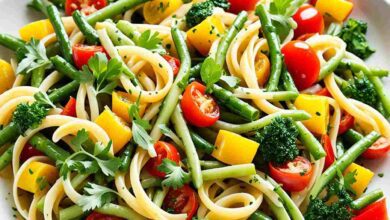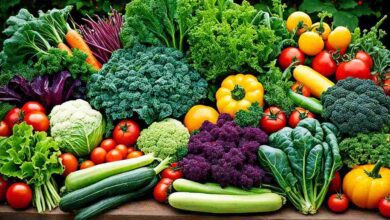Is Indian food healthy for weight loss?
"Evaluating the Role of Indian Cuisine in Supporting Weight Loss Goals"

1. Emphasis on Whole Foods and Spices
One of the strengths of traditional Indian food is its reliance on whole, minimally processed ingredients. Dishes are often based on vegetables, legumes, whole grains, and lean proteins, which can contribute to weight loss when consumed in balanced portions. Furthermore, Indian cooking incorporates an extensive variety of spices like turmeric, cumin, ginger, and chili, which not only add flavor but also offer health benefits.
For instance, turmeric contains curcumin, an antioxidant and anti-inflammatory compound that has been linked to improved metabolism and reduced inflammation, both of which can help weight management. Ginger can also boost digestion and reduce bloating, making it easier to maintain a balanced diet. Cumin has been shown to help improve digestion and may play a role in reducing body fat when included regularly in a balanced diet.
2. High in Fiber and Nutrient Density
Indian food is often rich in fiber, especially dishes that include vegetables, whole grains, and vegetables. Fiber is crucial for weight loss because it promotes a feeling of fullness and can prevent overeating by stabilizing blood sugar levels. Lentils, chickpeas, and black beans are commonly used in Indian dishes and provide a significant amount of fiber. These vegetables can be used in curries, soups, and salads, offering a filling yet low-calorie base for meals.
Furthermore, the nutrient density of many Indian ingredients — meaning they are packed with vitamins, minerals, and antioxidants relative to their calorie content — is beneficial for weight loss. Leafy greens like spinach and fenugreek, as well as vegetables like cauliflower, carrots, and bell peppers, provide essential nutrients that support metabolic health. Consuming nutrient-dense foods also reduces the likelihood of nutrient deficiencies, which can lead to cravings and overeating.
3. Balanced Use of Carbohydrates
A common misconception is that Indian food is too high in carbs for weight loss, largely because of staples like rice and naan. However, Indian cuisine offers many options for including carbohydrates in a balanced way. Instead of white rice, brown rice or millet can be used as a base for meals, providing complex carbohydrates and additional fiber. Roti made from whole wheat flour can also be a better option than refined naan for those looking to manage their carb intake.
Portion control plays a significant role in how carbohydrates impact weight. By keeping portions of rice or bread smaller and pairing them with protein-rich dals (lentils) or vegetable dishes, Indian meals can be structured to include carbs without overloading with calories. Moreover, Indian meals often include small servings of carbohydrates, focusing instead on larger portions of vegetables and protein sources, which helps to create a balanced, low-calorie plate.
4. Protein-rich ingredients for Satiety
Protein is essential for weight loss because it increases feelings of fullness and helps maintain muscle mass, which supports a healthy metabolism. Indian cuisine includes many excellent protein sources, especially for vegetarians. Lentils, chickpeas, tofu, and paneer are commonly used and provide protein in dishes such as dals, curries, and salads.
Non-vegetarians can also benefit from Indian dishes with lean proteins like chicken and fish cooked with spices and minimal oil. For example, tandoori dishes, which are marinated in yogurt and spices and then cooked in a tandoor oven, are a healthier, low-calorie protein option. Yogurt is not only a good source of protein but also contains probiotics, which can improve gut health — an important factor for metabolism and weight management.
5. Mindful Cooking Methods
The healthiness of Indian food for weight loss also depends on the cooking methods used. Traditional Indian cooking often involves sautéing spices and ingredients in ghee (clarified butter) or oil. While ghee can be nutritious in moderation due to its healthy fats, using it in large quantities can add significant calories to a dish. Opting for smaller amounts of oil or switching to healthier oils like olive oil or coconut oil can make Indian dishes lighter and more suitable for weight loss.
Steaming, grilling, or roasting are alternative cooking methods that help retain the flavor and nutrients of Indian food without excessive calories. For instance, dishes like bhindi masala (okra) or aloo gobi (potato and cauliflower) can be sautéed with minimal oil, providing the same delicious taste but with fewer calories. Cooking at home can be a significant advantage when trying to lose weight, as you have control over ingredients and portion sizes.
6. The Role of Fermented Foods
Indian cuisine includes several fermented foods that support digestion and metabolism. Yogurt and idli (steamed rice cakes made from fermented rice and lentils) are examples of such foods. Fermented foods contain probiotics, which can improve gut health. A healthy gut microbiome is linked to better digestion, improved immune function, and even weight management, as it can impact how your body metabolizes food.
Having a small serving of yogurt as a side to spicy Indian dishes can also help control portion sizes by reducing the heat and balancing the meal’s flavors. This way, fermented foods contribute not only to nutritional balance but also help control appetite and cravings, helping in sustainable weight loss.
7. Avoiding Processed and Heavy Foods
While traditional Indian food can be very healthy, certain dishes can be high in calories, fats, and sugars, especially when they are fried or laden with creamy sauces. Street foods like samosas, pakoras (fritters), and dishes made with creamy gravies like butter chicken can be high in trans fats and refined carbs, which don’t support weight loss. These dishes are best enjoyed in moderation or swapped for lighter versions when possible.
It’s also important to be cautious with sweets and desserts, which are popular in Indian cuisine but often high in sugar. Many traditional sweets, like gulab jamun and jalebi, are deep-fried and soaked in syrup. If you’re working toward weight loss, opt for healthier dessert options, like a small serving of fruit with a dash of spices like cinnamon or cardamom, which can satisfy your sweet cravings in a more nutritious way.
8. The Importance of Portion Control
Finally, portion control is essential for using Indian food to support weight loss. Indian meals are often served with multiple side dishes, and it can be easy to overeat without realizing it. By practicing mindful eating and choosing smaller portions, you can enjoy a variety of flavors without consuming too many calories. Portion control can be as simple as having smaller servings of rice, eating more vegetables, and savoring your food slowly.
Additionally, starting your meal with a salad or soup can help you feel fuller and reduce your overall calorie intake. Moong dal soup (made from split mung beans) or a simple vegetable salad can be a great way to begin a meal and prevent overeating.
Conclusion
In conclusion, Indian food can be a healthy choice for weight loss if approached mindfully. With its emphasis on whole foods, fiber-rich ingredients, and flavorful spices, it has the potential to support a balanced diet and weight management goals. By focusing on lean proteins, whole grains, vegetables, and mindful cooking techniques, it’s possible to create nutritious meals that align with your weight loss goals. Avoiding heavy, creamy dishes, limiting fried foods and desserts, and practicing portion control are also Ultimately Indian cuisine.




